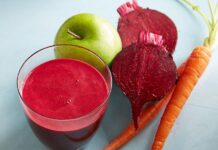Food Adulteration: Meaning, Types, Effects, Methods and Prevention….
This is a well written essay on food Adulteration.
WHAT YOU DON’T KNOW ABOUT FOOD ADULTERATION
Introduction:
We’ve probably had many deaths due to food adulteration than we actually know because people die without any autopsy conducted on them to ascertain the cause of death.
Today, food system is on the front burner and this is because we have compromised the safety of our foods from production to processing and all that connects to each stage of our foods. You hardly see a whole food and the few that are whole have been reduced in quality.

Adulteration is an offence and when the food fails to meet the required standards set by the government, it’s said to have been adulterated by the producers or marketers.
Food adulteration takes place when knowingly or unknowingly substances that degrade the quality of food are added to it. Thus, the contamination of food or food materials by adding harmful substances to it or substances that reduces its quality.
#Food #adulteration is common in the third world and that is why most of our exported foods to the first world don’t meet their standards. Our Palm oil for instance was delisted in European market sometime ago.
What are Adulterants?
They are substances that lower the quality of food, when added to it. It is a substance found within other food substances that hamper the natural quality of the food. The adulterant may be present in any form and in any quantity.
Adulterants are mostly harmful and pose the ability to lower the potency of the product. Even if the adulterant is not harmful, it reduces the nutritional value of the food to a greater extent.
Some adulterants are also identified as carcinogenic in nature or lethal when exposed to them for a longer period. Different types of adulterants are used for different types of food.
Food Is Considered Adulterated If it does the following:
✅ A substance that degrades the quality of food or turns it hazardous is added to it.
✅ Cheaper or low-quality substances are used as a substitute for whole or a few ingredients.
✅ A constituent of food is a partly or wholly taken out, reducing the quality of food.
✅ It’s made presentable with harmful substances. Or its color is changed to make it look better.
✅ Anything that reduces the quality of food is added to or removed from it.
Examples of Food Adulteration to look out for:
⏩Mixing of pulses with sand particles, pebbles.
⏩Mixing milk with water.
⏩Mixing oil with chemical derivatives or cheaper oils.
⏩Packing low quality food products with fresh and high quality ones.
These are a few examples of food adulteration.
Why is Food Adulteration Done?
As a kid growing up, I remember we were taking some of what we called ice cream in school then but it was later I discovered that something fishy about them. They were not ice cream at all.
For many years, you might have noticed the practice of adding water to milk to increase its quantity and gain more profit from less volume of milk.
Similarly, food adulteration is done by food manufacturers and industries for various reasons.
📌 Food adulteration is practiced as a part of a business strategy to gain more profit by dubious means.
📌 It is also done to make the food presentable and as an imitation of some other food which is more in demand.
📌 Food adulteration is many times done by those who do not have a proper understanding of its hazards. Due to a lack of awareness and proper knowledge it is still widely practiced by many in third world country.
📌 Adulteration increases the weight of the food, helps gain more profit, and increases sales in cheaper ways.
📌 The increasing rate of the population also plays a major role in food adulteration.
📌 The inefficiency of government initiatives to control it.
Major Types of Food Adulteration
There are about four different types of food adulteration.
✅ Intentional Adulteration: When substances which look similar to the constituents of the food are added to it, to increase its weight and gain more profit. Common example is mixing of pebbles, stones, marbles, sand, mud, filth, chalk powder, contaminated water, etc.
✅ Incidental Adulteration: Incidental adulteration occurs due to negligence while handling food. Like residues of pesticides in grains, larvae growth, presence of droppings of rodents, etc. These are common errors associated with our food production and processing and it’s largely due to lack of quality control.
✅ Metallic Adulteration: The addition of metallic materials into food like lead or mercury is metallic adulteration. It may happen accidentally or even intentionally.
✅ Packaging Hazard: The packing materials in which the food is packed may also interfere and mix with the constituents of the food, leading to packaging hazards.
Methods of Food Adulteration
We have about six methods of food adulteration methods and they are as follows:
🔸 Mixing– Mixing of sand, dust, clay, mud, pebbles with food particles.
🔸 Substituting– Some healthy constituents are replaced by cheaper and low-quality ones, which alter the nutritional values of the food and may even impose a health hazard.
🔸 Using Decomposed Food– This method indicates mixing decomposed food with healthy ones. Food that even conceals damage or inferiority of any manner is also considered to be adulterated. Also, the deliberate mixing of healthy food with questionable quality food leads to the final product adulterated.
🔸 Additions of Toxic Substances– Food adulteration also involves the mixing of food with toxic substances to gain higher profit and increase sales. Example- Addition of color, dyes, or harmful unpermitted preservatives.
🔸 Misbranding– Altering the manufacturing dates, expiry dates, list of ingredients or misleading ingredient derivatives, and so on.
🔸 Artificial Ripening– Adding chemicals to the fruits and vegetables which speed up the process of ripening in them, is also considered as food adulteration. Example- Mango is ripened with carbide for meeting the commercial demand against supply.
Harmful Effects of Food Adulteration
Food adulteration has a great impact on our health. Be it any kind of adulteration, prolonged consumption of this type of food is very harmful to the body. Consuming such food increases the toxicity in the body.
As the nutritional value of the adulterated food goes down, such food is not anymore nutritive for the body. The addition of chemical adulterants and colors many times prove to be fatal. As they pose an onset of health risks and also carcinogens.
Some adulterated food may also affect our internal organs directly leading to heart, kidney, liver, and many more organ disorders and failure.
How to Detect Food Adulteration
Food adulteration has many ill effects on our health. Prolonged consumption of adulterated food may even prove to be disastrous. The use of organic food is more trending these days, as organic foods give us the complete nutrition that a particular food is supposed to give. It is not laden with harmful chemicals or polished with toxins like wax.
But, due to low productivity, organic food is not always available and is more expensive than the common produce. Therefore, it is important to detect if your food is adulterated. We have simple methods that you can use to achieve this.
📌 To determine if milk is adulterated with detergents, take some milk in a bottle along with some water and shake it well. If it settles into a frothy layer, it is pure. If the milk is adulterated, it forms a thick layer.
📌 Similarly, if you want to know if milk, sugar or jaggery is adulterated with chalk powder, take your sample and mix in a glass of water. Any precipitate at the bottom of the glass indicates the presence of chalk.
📌 To determine if the vegetables are polished with color, soak them in water for some time and you will be able to see the color getting dissolved in water.
Prevention of food Adulteration
How to Prevent Food Adulteration:
1. On the industry level, food adulteration can only be checked with strict and stringent laws and government interventions and checks. Food quality departments should be enforced by producers as well.
2. To avoid consuming adulterated food, always make sure that you don’t buy deep or dark-colored groceries to be able to notice changes.
3. Reduce the consumption of processed food.
4. Wash or soak your fruits and vegetables well in warm water before consuming.
5. Canned or tinned foods must be checked for any leakages or puffing before buying.
I hope you got value? Let me know what you have learnt in the comment section. Please help share this post to save more people from consuming these adulterated foods that are very dangerous to health.
This article is the intellectual property of:
Okereke Soromfechi (RDN)
(Nutrition LIFE)
























